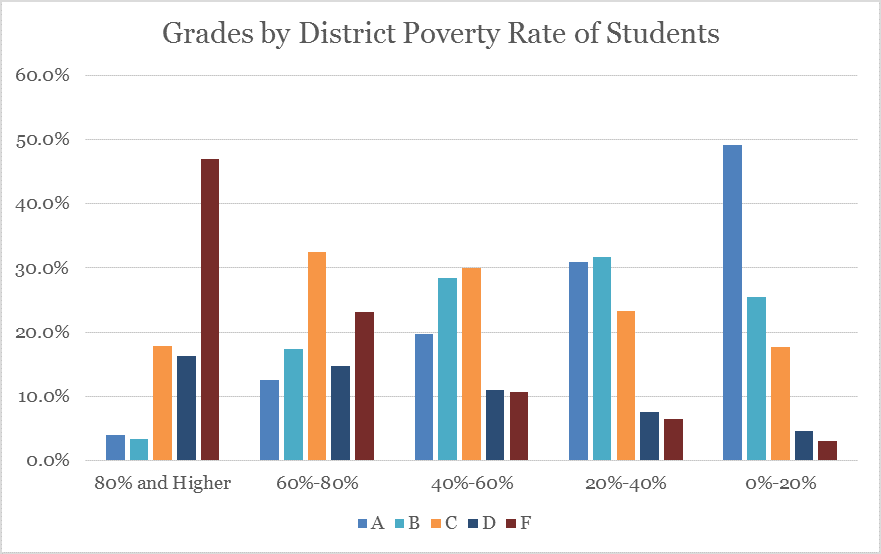What you need to know about Ohio Politics and Policy
Stephen Dyer · September 3, 2013
Mirror Mirror on the Wall. Is This New Report Card Fair at All?
Late last month, Ohio’s new Report Cards were released and many news stories focused on how traditionally high performing school districts took some hits for failing to address issues among some of their most gifted and challenged students. There appears to be a shift from simply examining straight test scores (notoriously linked to poverty) to a more nuanced, thoughtful examination of their meaning. And while these data remain limited by the fact only a few tests are given in a few grades in a few subjects, it appeared that the state was headed in a positive direction. Well, even though there are better aspects of the report card, the overall results remain the same: the richer your district, the better the performance. We have attached two charts below that show how different districts perform by both percentage of students in poverty and the state’s own classification of each district.

Tagged in these Policy Areas: K-12 Education


